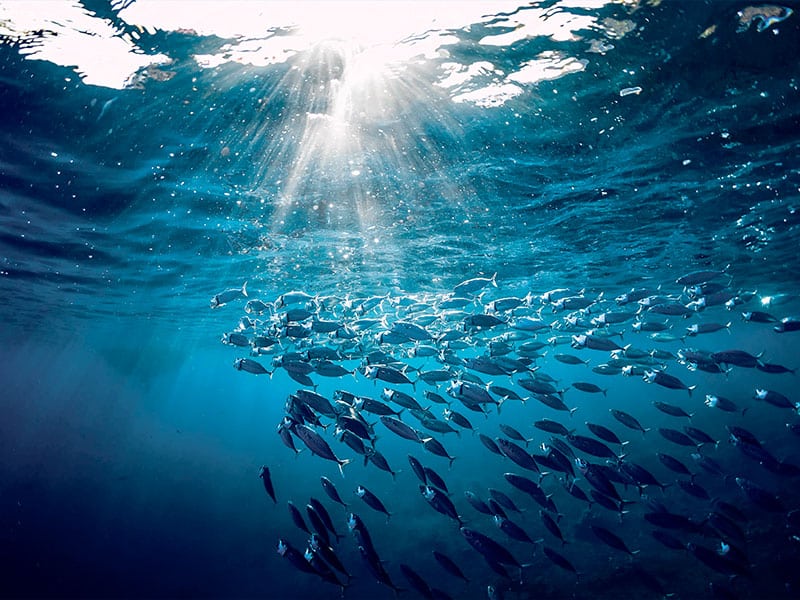Rising ocean temperatures threaten marine life
5 min read
Sea surface temperatures actually higher than normal all around NZ. Photo: Getty Images
Ocean temperatures around New Zealand remain higher than usual, with marine heat waves threatening marine life.
MetService oceanographer Dr Joao de Souza says “extreme” heatwaves along the South Island’s south-western coast are reaching new records, with sea surface temperatures reaching an incredible six degrees higher than normal.
“Sea surface temperatures are actually higher than normal all around New Zealand, with ongoing marine heat waves at Cape Reinga, Taranaki, Wairarapa, Cook Strait, Chatham Islands, Banks Peninsula, Otago Peninsula, and Stewart Island,” Dr Souza says.
Dr Souza has been tracking marine heatwaves as part of the Moana Project, a five-year, $11.5 million MBIE Endeavour ocean research initiative. It aims to improve understanding of coastal ocean circulation, connectivity, and marine heatwaves to provide information that supports New Zealand’s seafood industry.
The initiative brings together 54 experts from across 14 national and international organisations. The project involves research organisations in New Zealand and overseas and partners with Whakatōhea iwi to support their rohe moana interests in the Bay of Plenty.
The Moana Project has five major components. Through these complementary work streams, the initiative is set to change how people understand and view Earth’s oceans.
“By comparing the current or forecasted temperature to the average of the last 25 years for each location and day of the year, we get a picture of how much warmer than normal the oceans currently are,” he says.
Dr Souza says he has never seen temperatures reach these sorts of levels before.
“What we are finding is disturbing. A six-degree anomaly is a whole new level compared to what we have seen before,” he says.
“Our research shows that for the last couple of years, marine heatwaves have persistently impacted New Zealand coastal waters.
“The ocean has broken all records – the longest marine heatwave, which lasted just over a year in the Bay of Plenty, and now the biggest departure from normal, with 23-degree warm surface waters off Haast. This is similar temperatures to waters off Northland and normally never happens at these latitudes.”

Dr Souza says the warm water can cause problems for marine life.
“Ocean temperatures don’t vary like air temperatures. The ocean takes a long time to heat up and cool down.”
In mid-January, observations collected in partnership with the fishing industry showed waters in Fiordland had been a lot warmer than usual, even at depth, with the trend expected to worsen over the coming week.
“For marine life, experiencing 23-degree water off the South Island’s west coast is very unusual,” Dr Souza says.
He says marine heatwaves off the West Coast have been linked to kelp die-off.
“I am not a fishing scientist, but we had observed in the past the bleaching of sea sponges in Fiordland, large mortality of kelps in the northern part of the South Island West Coast, mortality of salmon in the farms in Marlborough Sounds, etc.,” says Dr Souza.
“The clear link to marine heat waves is being explored, as we still know little about the thermal tolerance of different species around the country.”
Craig Jones, a commercial fishing operator off the West Coast who works with the Moana Project, has noticed the effects of warmer waters over the past few years.
“The patterns in fish are changing; the fish are still around but it’s not the same,” he says.
“This summer, in particular, we are seeing snapper and kingfish down our way more than we traditionally have. They seem to be trending south.”

The warm water is likely caused by a mixture of climate change and the ongoing La Nina conditions, according to Moana Project oceanographer from the University of Otago, Dr Robert Smith.
“A blocking high-pressure system with light winds in the area is leading to reduced vertical ocean mixing and reduced heat loss from the ocean, triggering the marine heatwave,” Dr Smith says.
“This is exacerbated by warming in the eastern Tasman Sea, which is currently more than two degrees warmer than normal at depths of 100 to 400 metres. These warm underlying conditions make it easier for the surface ocean to tip over into marine heatwave conditions.”
The seven-day forecasted sea surface temperatures and how they differ from the 25-year average (called the temperature anomaly) for New Zealand’s ocean can be explored on SwellMap, the free MetService marine forecasting website. Users can zoom in to areas of interest and click on the map to get the exact temperature or difference from normal.
Dr Souza says New Zealand has one of the largest ocean territories in the world, upon which a large part of the economy depends.
“But we have very little data about our coastal ocean. To improve our understanding of, and ability to predict, the ocean dynamics that support our blue economy, we need more data,” he says.
“The changing climate affects our oceans. Over the last few years, marine heatwaves have entered New Zealand waters. As part of Ngā Ripo o Te Moana, we are using machine learning to improve our models so we can better predict when and where marine heatwaves will happen. Such models help our partners in the New Zealand seafood industry prepare for and mitigate their effects.”
A new forecast developed by the MetService-led Moana Project is now available on SwellMap, showing the difference between actual and expected sea surface temperatures for New Zealand waters.
The forecast allows people to check whether the water temperatures are indeed warmer or cooler than expected for the time of year.
“This year’s past temperatures have been consistently above average with marine heatwaves present in many regions around the country,” Dr Souza says.
“Hydrodynamic modelling estimates currents, salinity, temperature, and water levels. Good ocean models help us manage our oceans better, by allowing us to look at past conditions and predict what will happen in the future.”



